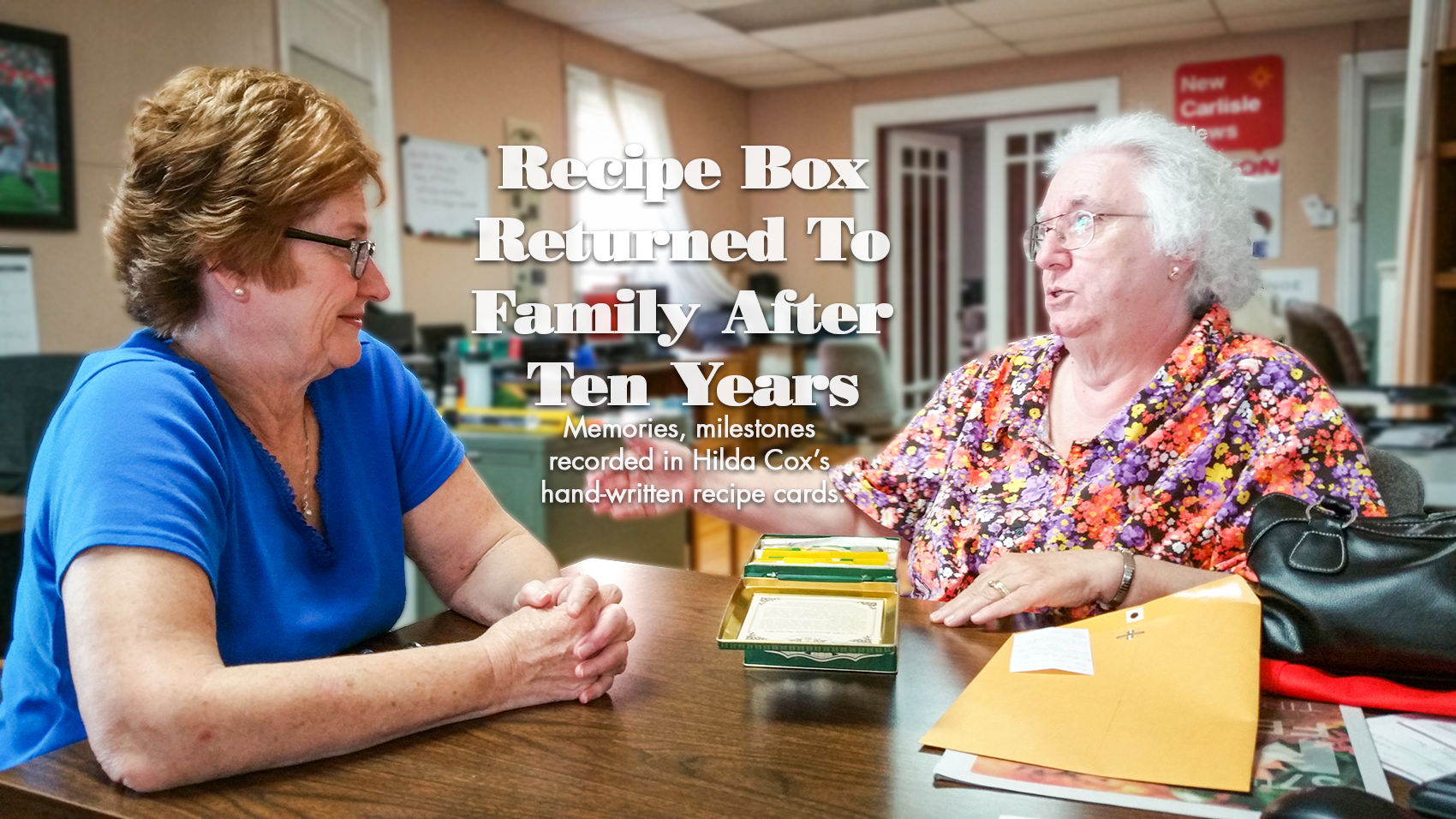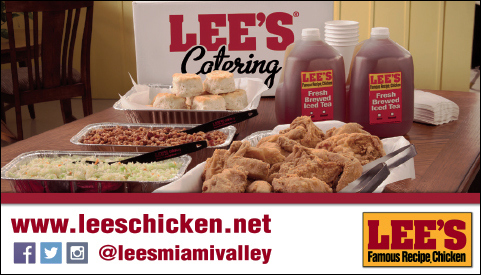
Memories, milestones recorded in Hilda Cox’s hand-written recipe cards.
I had the pleasure of sitting down with two lovely ladies last week for a reunion of sorts, as a treasured box of one woman’s hand-written recipes was returned to her daughter.
Our own writer and columnist Connie Moore purchased the recipes at a New Carlisle estate auction in 2005, and in a way, felt as though she came to know the woman to whom the box belonged through her side notes and ranking system on each card. Moore had in fact met Hilda Cox once, in the 1990s, during one of Cox’s famous luncheons, but said that the personal notes and snippets of information written on many of the recipes made her feel as if she knew Cox well.
“You can really get a lot of Hilda out of this box,” Moore said Friday before returning it to Cox’s daughter Mary Steele.
Steele said it was primarily her responsibility to go through her mother’s things to prepare for the auction after she passed away in 2005, and while she took other recipe boxes, she somehow overlooked one. Steele thanked Moore for the return of the memories, saying it felt like she had a piece of her mother back.
Hilda Cox was famous in New Carlisle for her decorated cakes and her luncheons among friends, and her daughter Marty compiled a list of her recipes for publication after her death. Moore she met Cox shortly after she’d first been hired as a reporter. Moore said she was incredibly nervous about speaking at Cox’s luncheon, but noted that Cox was kind and made her feel very welcome. It was because of her meeting with Cox and her legendary culinary status around town that made Moore attend the estate auction and obtain something that belonged to her.
Along with the box of recipes, Moore’s winning bid also included a scrapbook, also filled with recipe cards, which she carefully detached from the book and placed into the box.
As Steele looked through the box last week, she found a hand-written recipe of her grandmother’s, saying she had no idea it was in there, noting that she would pass it along to her cousins. Steele also found a recipe for pizza, written in her own hand, as she had made the pizza for her husband’s Phil, who she was only dating at the time. Cox’s note in the margins states that Mary made the pizza for Phil in 1964.
Moore was so taken by Cox’s rating system for recipes that she started using them as a basis for her own. Take, for instance, the several meatloaf recipes included in the box. One is labeled “good meatloaf,” another deemed “delicious,” and also “Jim’s meatloaf.” Other duplicate recipes are distinguished by their adjectives and punctuation, with “delicious!!” obviously beating the ones marked only “delicious.”
Moore and Steele discussed the significance of the memories stored in recipe boxes, with a little piece of Cox’s soul ingrained through each greasy and floury fingerprint upon the favored cards. Having lost my own grandmother last year, my mother and I went straight to her two recipe boxes while cleaning out her house just after her passing, treasuring them above all the other material things that we might hold some emotional connection with. By keeping her recipes and kitchen utensils with us, we also keep her memory alive through every piece of pie and jar of apple butter prepared from her instruction.
I asked Mary and Connie what they thought would become of the next generation of matriarchs, as many modern moms get their recipes online or from their cell phones. Although this current tech-savvy method of recipe gathering is certainly better for the environment as it saves paper, it also leaves no material for the makings of a recipe box and all of its inherent memories.
I have a hard time imagining this scenario in 50 years, as daughters and granddaughters gather around grandma’s iPhone, looking through the screenshots of her hastily-captured recipes that she saw on Facebook or Pinterest

